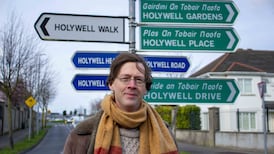EDWARD JOHN CARLOS PLUNKETT:EDWARD JOHN Carlos Plunkett, 20th Lord Dunsany, who has died aged 71, was a gifted painter, sculptor, designer and architect.
Scion of an ancient Irish family that included St Oliver Plunkett and Sir Horace Plunkett, his father was Irish and his mother, Brazilian. His greatest childhood influence was his grandfather, the writer and playwright Lord Dunsany whose story My Talks with Dean Spanleywas recently the subject of a movie starring Peter O'Toole.
His grandfather brought him up after his parents’ divorce.
By the age of 11, he had made portraits of the staff at Dunsany Castle and later of his friends at school in Eton, England.
Educated at the Slade School of Fine Art in London and at the École des Beaux-Arts in Paris, he painted “hard” during his 20s, says his friend Grey Gowrie, in his studio in Paris – a gift from his godfather Siegfried Sassoon – later dividing his time between Rome, London and New York.
In subsequent years, he exhibited in the United Kingdom, Italy, New York and Canada. His 1975 exhibition in Rome of his geometric abstract paintings exploring illusion and perspective seemed to mirror what his grandfather had achieved in words.
The noted Italian art historian Guilio Carlo Argan described his work as “magic-mythical” while Gowrie compared it to that of the celebrated architect Renzo Piano.
In the 1980s, he married the Brazilian architect Maria Alice Marsillac in New York. They founded the design and architectural practice de Marsillac Plunkett Architectural, working together on many privately commissioned projects.
“He was the artist,” according to Lady Dunsany, “I was the technician.” Sons Randall and Oliver were born in the United States. The family returned to live in Ireland in the early 1990s where he established his atelier and succeeded to the title on the death of his father in 1999.
His work in Ireland included portraits, notably of Charles Haughey and John Bruton, landscapes and bold, architectural sculpture. He designed porcelain tableware, furniture, vases and fragrance bottles. His last major exhibition in Rome in 2005 was a further development of his sensuous, colourful and geometric approach to perspective. “He explores the place of perspective in our unconscious mind, as [Giorgio] de Chirico did, as [Réne] Magritte did, but more sternly,” says Gowrie.
A shy, sociable and cosmopolitan man with an often distracted air but a great sense of humour, he had a wide circle of friends, loved to entertain and lived for his family.
“He was very much a sophisticated international figure, but because he didn’t pander to contemporary opinion here, he tended to get left out of the loop,” says art consultant Ciarán MacGonigal.
“I think it will take time for his reputation to settle. When this clears he will be seen as a very considerable figure indeed for 25 years, a very important if rather austere painter. The Irish taste didn’t run to him and perhaps just as well, because he was afraid of being patronised as Lord Dunsany instead of Eddie Plunkett.”
Before he became ill, he had been working on a sculpture Presence in Absenceto honour his beloved ancestor "Uncle Horace", founder of the co-operative movement in Ireland and the first head of the Department of Agriculture, to coincide with the International Year of Agriculture in 2012.
He is survived by his widow Maria Alice de Marsillac Plunkett, sons Randall and Oliver, his sister Beatrice, and by his step children Joanna and Daniel de Marsillac.
Edward John Carlos Plunkett, Lord Dunsany: born September 10th, 1939; died May 24th, 2011









